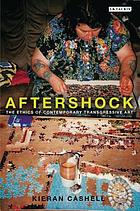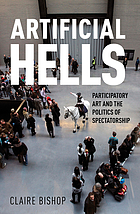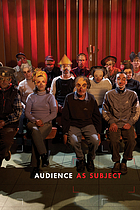About this Guide
The guide is organized into 10 categories containing recent, annotated selections from the library's collection. At the bottom of each page Topic Exploration links invite browsing for additional sources within the category.
To access RISD subscription-based sources, see How to Login from Off Campus
 Compiled by Ellen Petraits, Research & Instruction Librarian. Except where otherwise noted, this guide is subject to a Creative Commons Attribution license.
Compiled by Ellen Petraits, Research & Instruction Librarian. Except where otherwise noted, this guide is subject to a Creative Commons Attribution license.
Introductory Reading
 Aftershock : the ethics of contemporary transgressive art
Aftershock : the ethics of contemporary transgressive art
Accused by the tabloid press of setting out to 'shock', controversial artworks are vigorously defended by art critics, who frequently downplay their disturbing emotional impact. This is the first book to subject contemporary art to a rigorous ethical exploration. It argues that, in favouring conceptual rather than emotional reactions, commentators actually fail to engage with the work they promote.
 Artificial hells: participatory art and the politics of spectatorship
Artificial hells: participatory art and the politics of spectatorship
"Since the 1990s, critics and curators have broadly accepted the notion that participatory art is the ultimate political art: that by encouraging an audience to take part an artist can promote new emancipatory social relations. Around the world, the champions of this form of expression are numerous, ranging from art historians such as Grant Kester, curators such as Nicolas Bourriaud and Nato Thompson, to performance theorists such as Shannon Jackson. Artificial Hells is the first historical and theoretical overview of socially engaged participatory art, known in the US as 'social practice.'
 Audience as subject (exhibition catalogue)
Audience as subject (exhibition catalogue)
Audience as Subject is the catalogue to a two-part exhibition that considers the audience broadly as a living organism of participating viewers of live events. The two parts, "Part 1: Medium" and "Part 2: Extra Large" examine audiences at gatherings of corresponding sizes.
 Ethics (Documents of Contemporary Art series)
Ethics (Documents of Contemporary Art series)
The boundary of a contemporary art object or project is no longer something that exists only in physical space; it also exists in social, political, and ethical space. Beshty evaluates the relation of ethics to aesthetics, and demonstrates how this encounter has become central to the contested space of much recent art.
 Scandalous - a reader on art and ethics
Scandalous - a reader on art and ethics
Recent encounters between art and real life, the ubiquity of images of violence and humiliation in visual culture and the media, and the persistence of controversial debates on public and participatory art projects are raising fundamental questions about the importance of ethical decisions in art and curating. How far can provocation in art go, before it becomes cynical and abusive? Does good censorship exist? Are ethical decisions seen as more urgent in participatory art?